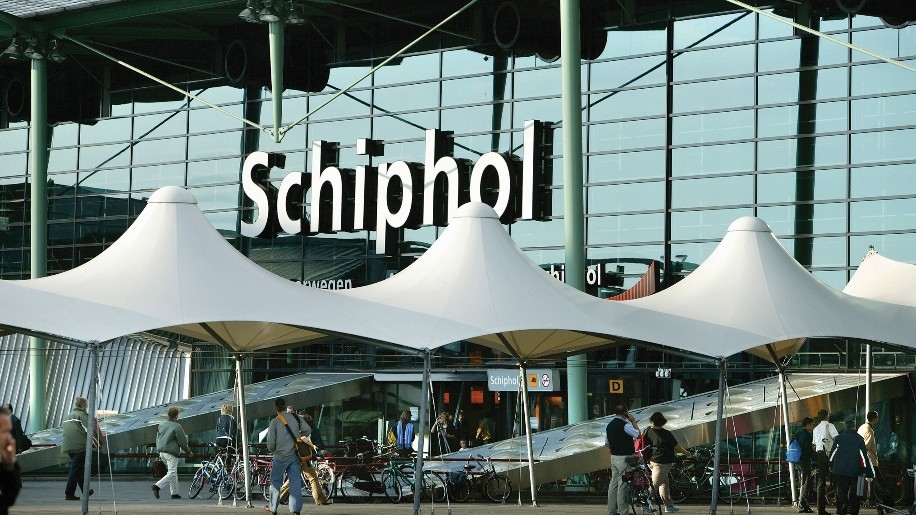
With competition for flight slots intensifying, train connections between airports are becoming ever more important
Little did Lufthansa know what it had started decades ago, with its “Donald Duck” airport train. Named for its yellow-and-blue livery and the bill-like appearance of its front carriage, the DB Class 403 took passengers the leisurely route from Dusseldorf to Frankfurt airports along the scenic Rhine. Lufthansa’s bright idea was the forerunner of the many dozens of air-rail routes that today criss-cross mainland Europe. Travellers now have a far greater choice of air-rail services, but instead of taking “classic” routes, they sprint over high-speed tracks linking towns and cities to major hub airports.
Moreover, some are truly international. They cross frontiers, enabling a Belgian traveller to, for example, take the high-speed train from Brussels to fly out of Amsterdam, Frankfurt or Paris.
In comparison to Donald Duck, on which all passengers, regardless of the ticket price or class of their plane, were provided with business class service and long-haul business class seating (from a DC-10), today’s air-rail links are utilitarian and focus instead on speed and frequency. Lufthansa conceived its Donald Duck trains to cut the cost of operating short feeder flights, but found it too costly to operate and withdrew it. Nowadays, the importance of air-rail is in freeing up slots at busy airports, providing foreign airlines with greater domestic coverage and giving passengers more reliable connections.

Take Amsterdam, for example. Schiphol faces a slot shortage and the airport authority wants more travellers to arrive by train. Schiphol’s slot shortage is so severe in the morning (a peak time for transatlantic departures) that, in a bid to increase competition, the European Commission instructed KLM to surrender one of its precious New York morning slots to low-cost carrier Norwegian.
Now Air France and KLM have realised the slots are wasted when flying travellers between their twin hubs of Schiphol and Paris CDG. These flights may be reduced in future. Direct high-speed Thalys trains linking both airlines’ hubs start in 2019.
In Germany many foreign airlines participate in Deutsche Bahn’s (DB) Rail and Fly scheme, which links Frankfurt to towns and cities across Germany. DB’s scheme includes Amsterdam and Zurich too. Emirates benefits because the German government restricts the Dubai-based carrier to serving no more than four points. Rail and Fly enables Emirates to capture travellers from many more cities in Germany. It means that Emirates is able to “serve” the likes of Nuremberg, Stuttgart and Berlin where it doesn’t have flight slots.
But what happens to the traveller in the case of delays? Provided the rail link is included within the flight ticket, they will be protected. And when it comes to winter weather, rail is more reliable than domestic air. As a further bonus, the rail ticket is often provided free of charge within the cost of the flight ticket.
Because air-rail links cross frontiers between countries, powerful hub airports with dedicated stations can capture passengers from a rival. As previously mentioned, Brussels is a classic example.
The airport is not linked to the high-speed rail network and therefore those working downtown can quickly access rivals such as Amsterdam Schiphol and Paris CDG by Thalys and TGVs. Air France lures passengers to CDG from Brussels and, to make the process easier, it has staff at Brussels Midi, the Belgian capital’s main downtown station.

For its part, KLM continues to take connecting passengers from Brussels to Amsterdam by air. That’s a waste of up to five slots daily and goes against Schiphol’s aim of cutting these short flights.
One must also note that there are frequent rail services available from Brussels’ downtown stations (many by high- speed Thalys) to Schiphol. I asked KLM for an explanation and was told: “At present KLM will continue to operate short-haul flights between Schiphol and destinations such as Brussels and Dusseldorf. Currently the rail services are not suitable for feeder flights due to the longer journey times. We will continue to monitor the situation.”
Amsterdam Schiphol has many trains, both conventional and high-speed, operating to The Hague, Rotterdam, Antwerp and Brussels. It was intended that Eurostar also call at Schiphol on the way to Amsterdam, but it never happened. UK Border and Channel Tunnel authorities insist passengers are pre-cleared before boarding, which would require Schiphol’s train station to have a separate terminal. UK Border and the Dutch authorities have yet to approve the new Amsterdam/Rotterdam departure terminals, so travellers going Amsterdam-London must change at Brussels Midi for immigration/customs clearance.
Air-rail enables Air France to draw passengers from all over France. A large network of domestic TGVs run directly to CDG. Even Ouigo (SNCF’s budget TGV) serves CDG. Although not included in the air-rail scheme, the latter is useful for cost-conscious travellers.
In future air-rail can only become more popular simply because slots will become scarcer still and most large airports already have simple rail connections linking the airport with downtown.












